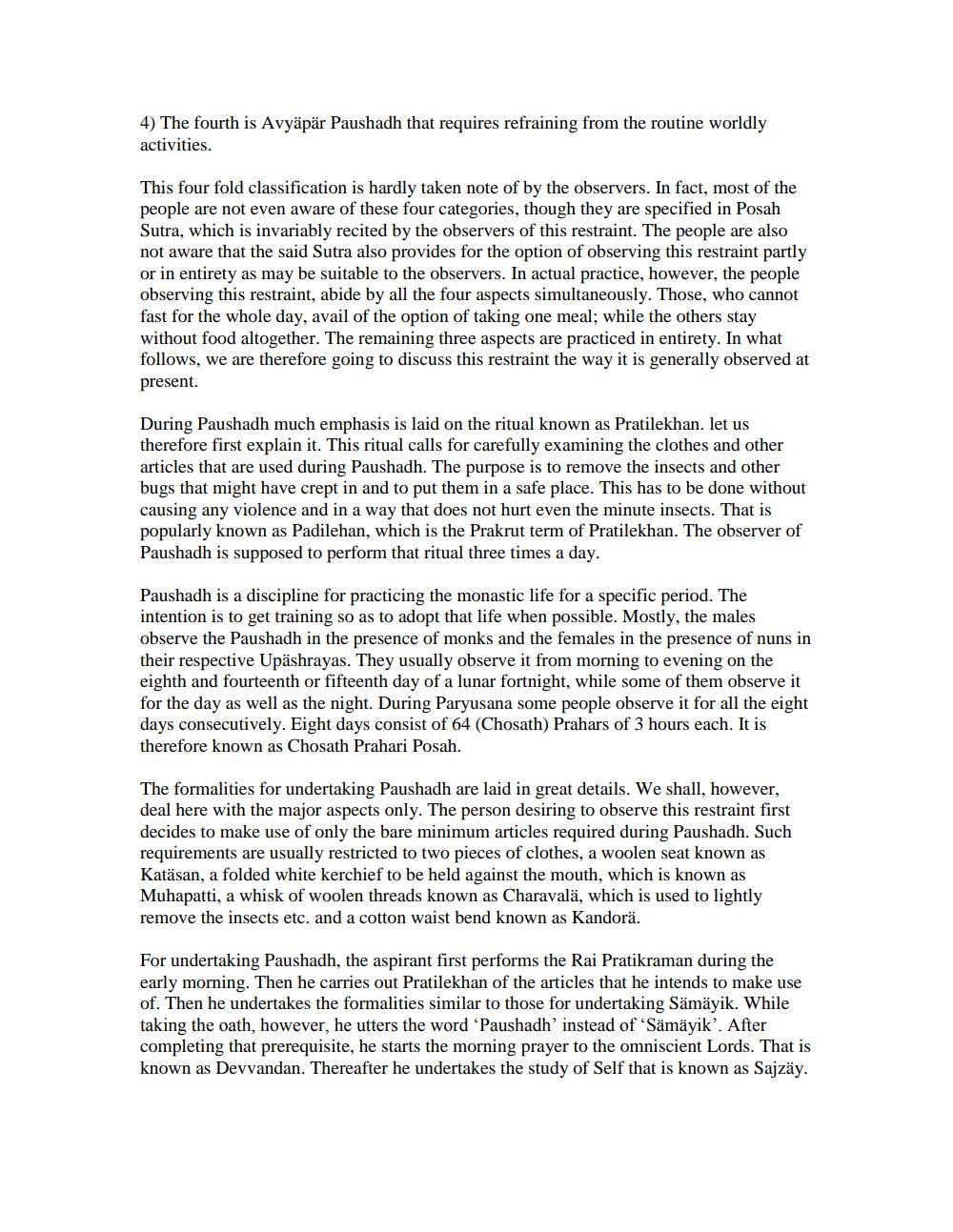________________
4) The fourth is Avyäpär Paushadh that requires refraining from the routine worldly activities.
This four fold classification is hardly taken note of by the observers. In fact, most of the people are not even aware of these four categories, though they are specified in Posah Sutra, which is invariably recited by the observers of this restraint. The people are also not aware that the said Sutra also provides for the option of observing this restraint partly or in entirety as may be suitable to the observers. In actual practice, however, the people observing this restraint, abide by all the four aspects simultaneously. Those, who cannot fast for the whole day, avail of the option of taking one meal; while the others stay without food altogether. The remaining three aspects are practiced in entirety. In what follows, we are therefore going to discuss this restraint the way it is generally observed at present.
During Paushadh much emphasis is laid on the ritual known as Pratilekhan. let us therefore first explain it. This ritual calls for carefully examining the clothes and other articles that are used during Paushadh. The purpose is to remove the insects and other bugs that might have crept in and to put them in a safe place. This has to be done without causing any violence and in a way that does not hurt even the minute insects. That is popularly known as Padilehan, which is the Prakrut term of Pratilekhan. The observer of Paushadh is supposed to perform that ritual three times a day.
Paushadh is a discipline for practicing the monastic life for a specific period. The intention is to get training so as to adopt that life when possible. Mostly, the males observe the Paushadh in the presence of monks and the females in the presence of nuns in their respective Upäshrayas. They usually observe it from morning to evening on the eighth and fourteenth or fifteenth day of a lunar fortnight, while some of them observe it for the day as well as the night. During Paryusana some people observe it for all the eight days consecutively. Eight days consist of 64 (Chosath) Prahars of 3 hours each. It is therefore known as Chosath Prahari Posah.
The formalities for undertaking Paushadh are laid in great details. We shall, however, deal here with the major aspects only. The person desiring to observe this restraint first decides to make use of only the bare minimum articles required during Paushadh. Such requirements are usually restricted to two pieces of clothes, a woolen seat known as Katasan, a folded white kerchief to be held against the mouth, which is known as Muhapatti, a whisk of woolen threads known as Charavalä, which is used to lightly remove the insects etc. and a cotton waist bend known as Kandorä.
For undertaking Paushadh, the aspirant first performs the Rai Pratikraman during the early morning. Then he carries out Pratilekhan of the articles that he intends to make use of. Then he undertakes the formalities similar to those for undertaking Sämäyik. While taking the oath, however, he utters the word 'Paushadh' instead of 'Sämäyik'. After completing that prerequisite, he starts the morning prayer to the omniscient Lords. That is known as Devvandan. Thereafter he undertakes the study of Self that is known as Sajzäy.




